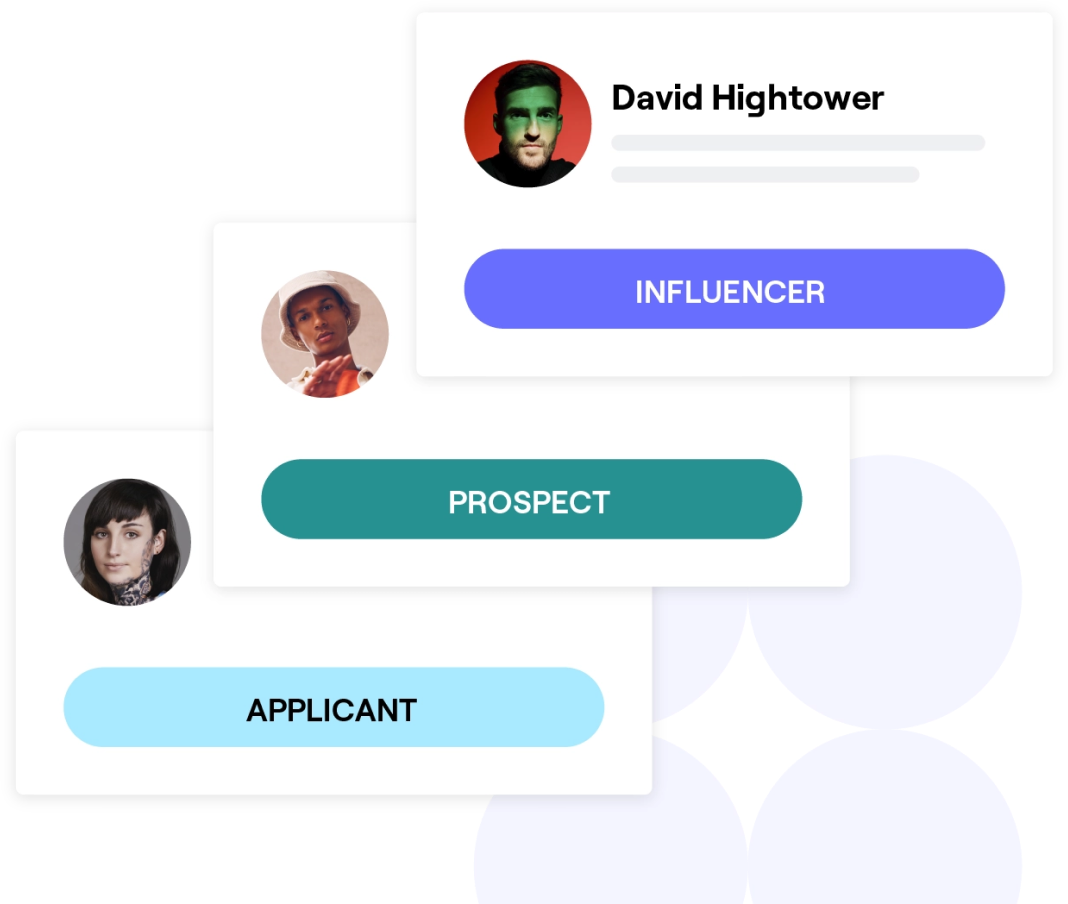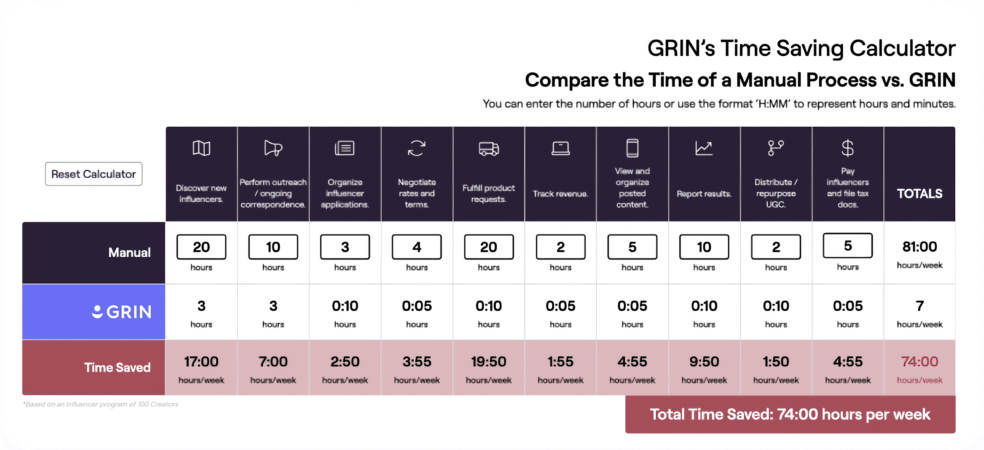Authentic content is key to amplifying brand image, marketing decks, consumer trust, and sales. Often, the trick is knowing how to leverage authentic content with existing strategies and tools.
With the launch of various shoppable ad features, brands have new tools to showcase their products with greater authenticity. Additionally, these shoppable image ads integrate well with other successful ecommerce strategies, to include social commerce and influencer marketing.
What is a shoppable ad?
A shoppable ad is an image illustrating products with tags (or markups) and checkout capabilities. Most often, these product tags embedded in the image allow consumers to hover over an item to see its price and add it to their cart.
The leading example of a shoppable ad is Google’s Image Ad feature launched in 2019. But Google is not the first platform to introduce this online advertising trend. Two other well-known examples are Pinterest’s Shop the Look Pins and Instagram’s Product Tags.
“Shop the Look” pins on Pinterest
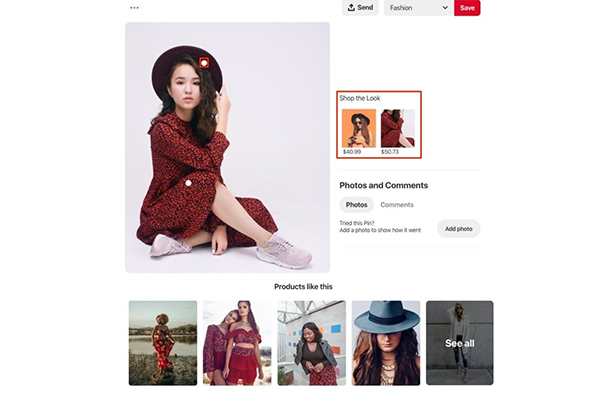
Several years ago, Pinterest recognized that consumers were using Pinterest boards as inspiration for future purchases. To empower these consumers one step further, Pinterest allowed vendors to identify products and prices within the Pinterest post.
Shop the Look Pins do not allow consumers to purchase products on the Pinterest ad platform. Rather, brands link the Shop the Look Pin to their own product page for customers to complete checkout. For this reason, some marketers argue that Pinterest doesn’t truly offer shoppable post capabilities.
Product tags on Instagram Shopping
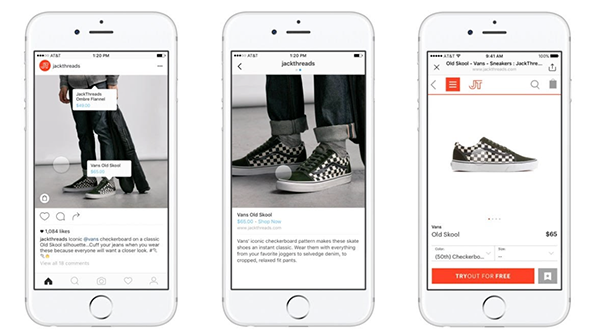
Product tags are available to brands that are approved members of Instagram Shopping. Brands and influencers can tag up to five items in shoppable posts. Another name for this S-Commerce feature in Instagram is Product Posts.
Product Posts are closer to the Google Shoppable Image Ad model wherein customers can hover over a product they like in an Instagram post and complete their purchase over the app. This streamlined non-redirect approach improves the shopping experience for customers on Instagram.
Google shoppable image ads on Google Shopping
“Google is bringing shoppable lifestyle content into Google Images results, turning search into the next frontier for product discovery.”
– Leo Strupczewski, Director of Marketing at Curalate
Whether sharing images over social media or on your website, consumers can now search images on Google using the Google Image search tool.

Brands can include their products on Google Shopping and tag these images with shoppable ad potential. The added searchability allows brands to be more visible, adding keyword relevancy to images hosted online.
How do Google shoppable image ads work?
Google Shoppable Image Ads are images with product tags and pricing and allows consumers to complete a purchase on the Google Shopping platform.
The key differences between Google Shoppable Image Ads and shoppable ads on other platforms is that these images are searchable. Additionally, Google’s latest features currently lead other s-commerce mediums in UX design. Lastly, these shoppable image features are available only to vendors that invest in sponsored ads.
Google took their shoppable ads endeavor seriously when they discovered (like Pinterest) that users were searching for images looking for product purchase ideas. In other words, customers wanted to see products in lifestyle displays, such as someone with similar weight and build wearing a particular clothing item.
“We’ve seen that 50 percent of online shoppers said images of the product inspired them to purchase, and increasingly, they’re turning to Google Images.”
– Surojit Chatterjee, Vice President of Product Management & Shopping at Google
It doesn’t cost brands anything to include product tags to their sponsored Google Shopping ads. Shoppers can search product names and categories, and Google image results will feature these shoppable images with price tags based on search relevance, so long as those images are sponsored Google Shopping ads.
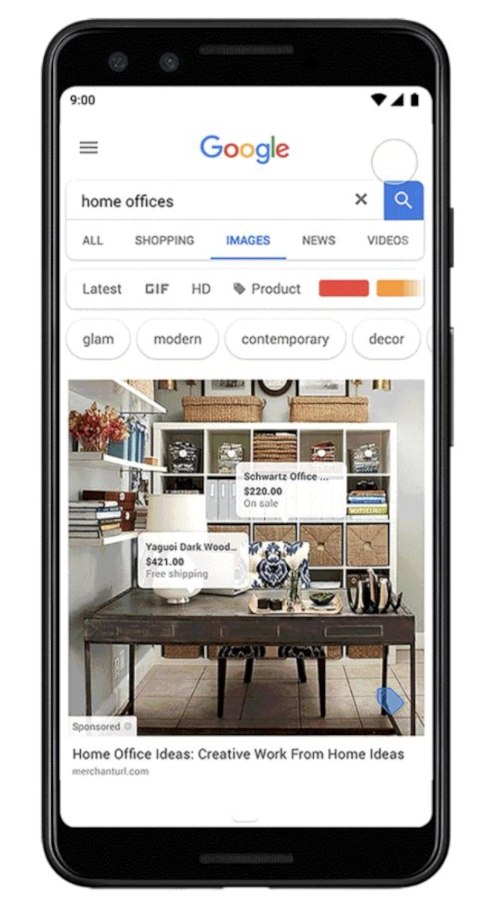
These shoppable ads receive the “Sponsored” designation on the bottom left corner of the image, as demonstrated in the screenshot above.
“Now, in addition to using markup solutions that we’ve long had available, retailers can provide product data to Google, free of charge, so that we can start showing more of your product information to potential shoppers.”
– Surojit Chatterjee, Vice President of Product Management & Shopping at Google
What do shoppable ads mean for brands?
“As these sorts of experiences become more and more commonplace, consumers will expect to be able to tap on any image they encounter and learn what products are inside of it… This will be true of paid media, social, eCom sites, blogs, influencer initiatives, email, and even chat.”
– Leo Strupczewski, Director of Marketing at Curalate
There are two critical things that brands should pay attention to when it comes to shoppable ads. First, brands have more ways to display their products online and generate awareness. Furthermore, the shoppable ads experience is more appealing to consumers and can make online transactions more efficient.
Second, shoppable ads on Google, Pinterest, and Instagram represent a fast-growing trend. Brands that want to remain on the cutting edge of ecommerce will want to integrate shoppable ads, including Google Shoppable Image Ads, into their overall marketing strategy to remain competitive in their industry.
How can ecommerce brands use shoppable ads?
There are key ways that a brand can take advantage of Shoppable ads successfully.
Feature new products
Launching a new product line through a shoppable image ad will look more real-life and allow consumers to see these new offerings through lifestyle photos. Price tag features further inspire customers to plan their budgets and create a list of products from your new line.
Bundle complementary products
One of the most powerful opportunities in shoppable image ads is showcasing multiple products in a single sponsored ad. This feature enhances consumer inspiration and can increase your brand’s average sale amount.
Promote limited-time offers
For seasonal shopping events or limited-time discount offers, shoppable image ads can convert consumers looking to try your brand for the first time.
Partner with influencers
An increasing number of DTC brands are leaning on influencers to produce social media content that showcases their products and services. These influencer posts create new ways to increase brand awareness and sales. More importantly, these influencer images often do a much better job at putting products and services into action than do traditional product photos.
Marketing strategies for shoppable brands
Shoppable ads are the latest addition to what is known as social commerce, or S-Commerce. In S-Commerce, product recommendations and ads connect various social media features, including newsfeeds, traditional social media PPC, and influencer content.
As such, shoppable ads can add omnichannel capabilities to a brand’s online marketing mix. Taking advantage of Google’s Shopping Image Ads platform (and similar platforms) allows DTC brands to operate in more places at once with customer-centric technology.
One of the most cost-effective marketing strategies exists between influencers and shoppable ad ecommerce. For example, Instagram’s Product Posts continue to cater to influencer-brand relationships and offer fresh ideas for merging their two marketing approaches.
Shoppable ads and influencer marketing
Due to social features like Instagram Product Posts, there has been some confusion about the difference between a standard influencer post and shoppable images/ads. To create a shoppable post, you typically must register (or verifying) your products with the social channel.
That said, taking the extra steps to integrate influencer posts with shoppable image ads will greatly improve your s-commerce performance. Here are a few reasons why.
Lifestyle content
Shoppable ads allow brands to create lifestyle content with integrated ecommerce capabilities. Consumers see an image they like, feel inspired by one of the products in the image, and complete a product purchase within seconds.
Customers can visualize their product purchase in an influencer’s content before completing a transaction. This level of product instruction and inspiration is unmatched. Influencers have the unique ability to add real life to their images and further generate sales for the brands they love.
Lastly, combining multiple products into an influencer’s image allows brands to bundle their products within a single shoppable ad. Not only does this decrease the number of ads a brand creates to showcase their inventory, but it also encourages consumers to buy a set of items rather than a single product.
Repurposing content
Influencer posts make great repurposed content. Many brands have been able to lower their graphic design and photography costs by extending the value of influencer content for ads on social media and search engines.
Because influencer content offers a lifestyle look to featured products, these images often perform better on places like Google Shopping.
Authentic content
Influencer images are more authentic than studio pictures. This authenticity increases consumer trust and customer loyalty. Influencers are an excellent resource for shoppable ads images showcasing genuine product excitement and optimal use.
Key takeaway: shoppable ads are the next powerful trend for ecommerce brands.
As the concept of shoppable ads continues to evolve, it’s likely that brands won’t have to repurpose influencer posts to take advantage of product tagging and mark-ups. Before long, influencers, ambassadors, and customers may become sources for the next generation of shoppable ads.
With these trends in mind, brands can think more broadly about their ecommerce and S-Commerce strategies. Shoppable ad experience enables influencers and ambassadors to not just recommend a product or service, but to also show buyers where and how to checkout without additional clicks or redirects.
Learn more about influencer marketing: Influencer Marketing 101








